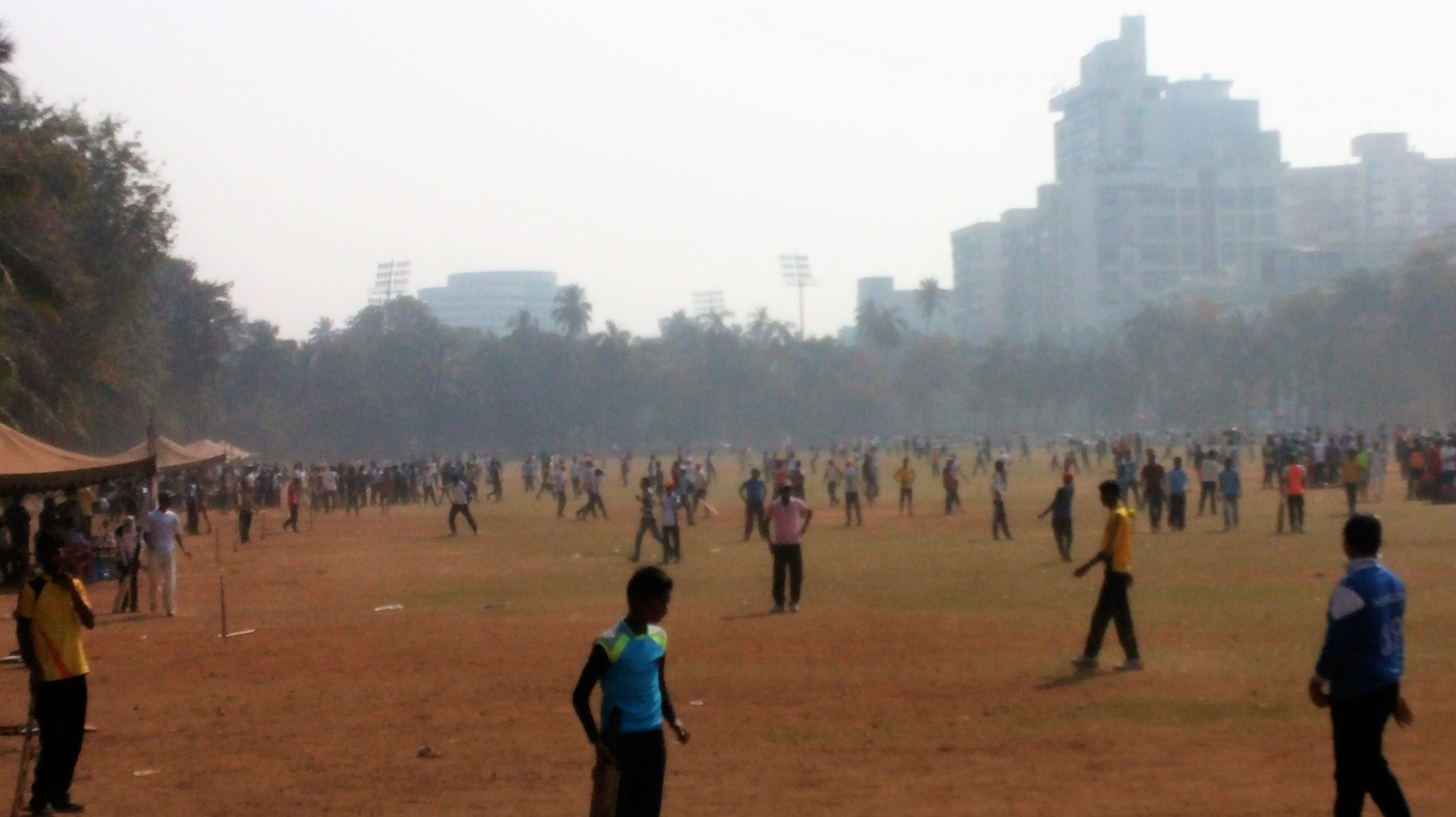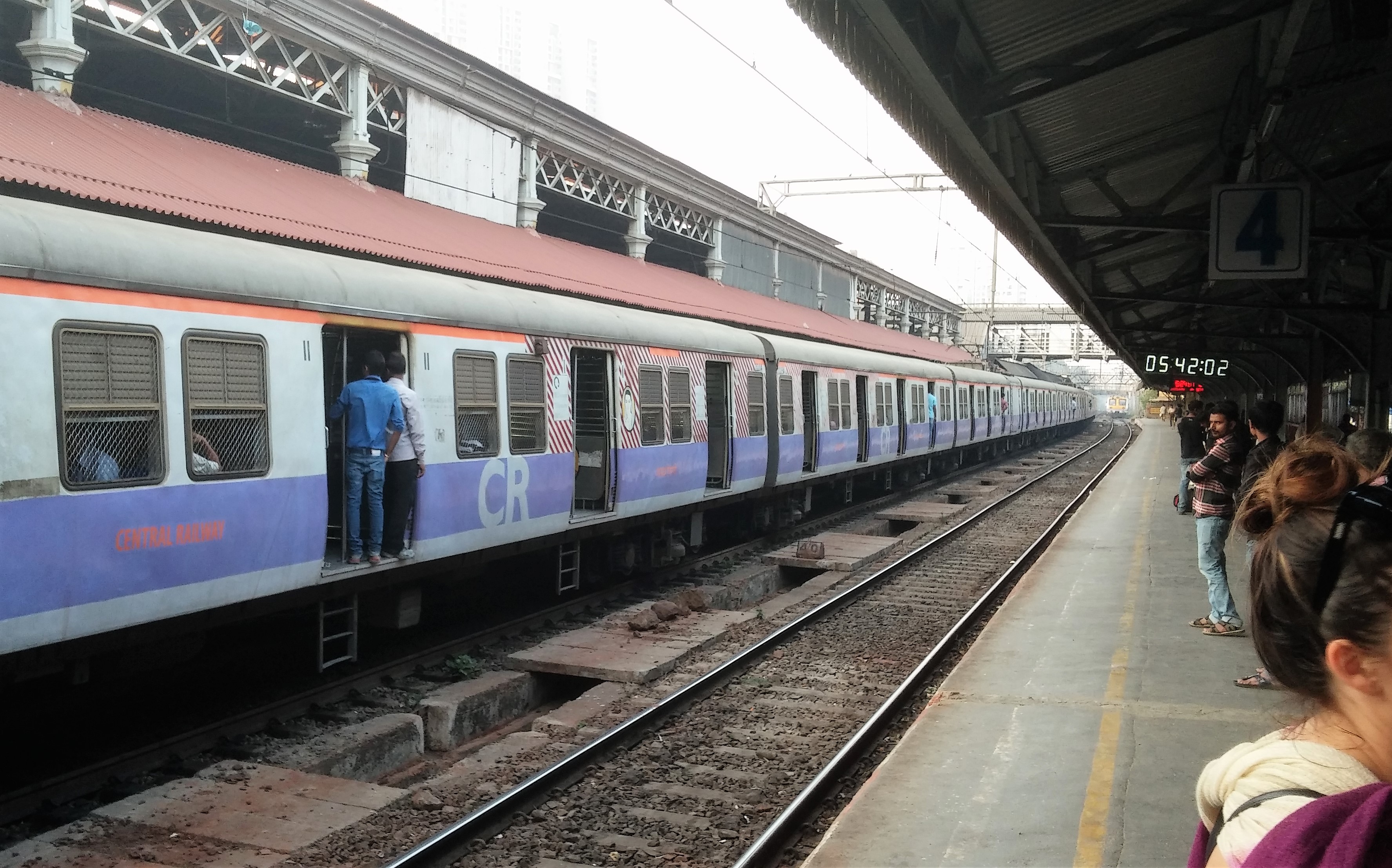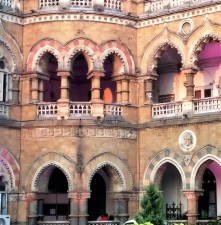The Mumbai transportation tour in 2015 was one of the most unique tours I’ve experienced in a big city. Most tours in large cities involve hoping on a large bus with 50 or so other tourists and stopping at four or five must see tourist sites and the obligatory stop at a gem, handicraft or other business where the tourists are forced to shop or sit in the corner for 45 minutes or so.
This tour was unusual and refreshing because its focus was not on the places we would visit. Instead, it promised to introduce tourists to all of the modes of public transportation in Mumbai, India a city with a metropolitan population of of over 21,000,000 at the time. The tour would utilize walking, taxis, buses and rail transportation to reach some of the sights of the central city.
I rendezvoused with the guide and other members of the tour at the Gateway of India monument located on the Arabian Sea waterfront. The tour consisted of myself, three young ladies from Australia, and the guide and his girlfriend. The guide and his girlfriend were students at a local university and life-long residents of Mumbai.

Construction of the Gateway of India was completed in 1924. The monument was used as a symbolic ceremonial entrance to British India for important colonial personnel. Gateways serve exits as well as entrances. This monument was also the location where the last British troops departed India in 1948, following Indian independence.
The Gateway of India is located across from the Taj Mahal Hotel which was one of the sites of the 26/11 terrorist attacks in 2008 that killed around 166 people. Our guide didn’t bring up the attacks, but I remembered this hotel from the TV coverage.

This post covers the forms of transportation experienced and some of the sights covered in this tour. Many of the prominent buildings in South Mumbai date from the colonial period. The general architectural style is referred to as Mumbai Gothic, a blend of Gothic, Victorian, and Art Deco.
One of the largest and most interesting looking buildings that we stopped at at the end of the tour was Chhatrapati Shivaji Terminus (CST) (now known as Chhatrapati Shivaji Maharaj Terminus) or Victoria Terminus. This building is a historic train station and UNESCO World Heritage Site. By its appearance I would never have guessed it was a train station.
The Mumbai Municipal Corporation Building (BMC)is across the street from the CST. The BMC houses the municipal government of Mumbai.

One part of our walk took us through a large park with numerous cricket fields. I believe this is Shivaji Park. Keeping the matches separated seems impossible yet no one seems to be concerned about potential interference from other matches.


If I recall correctly, this building was used primarily as offices for attorneys.

Dhanraj Mahal is the residence of the Dhanrajgir family in Mumbai, India. It was the residence of the legendary actress Zubeida Begum Dhanrajgir, who starred in the first Indian talkie movie Alam Ara (1931).
We also walked past the main museum in Mumbai, Chhatrapati Shivaji Maharaj Vastu Sangrahalaya. This building is constructed in the Indo-Saracenic style of architecture.

Unfortunately, I’ve forgotten the name of this stately building. Can anyone fill me in?

One stop that I found particularly interesting was Ghandi’s home, Mani Bhavan. He lived and worked here from 1917 to 1934. Coincidentally, the tour took place on January 15, which is the birthday of Martin Luther King, Jr., the American civil rights icon. King’s civil rights movement in the United States was largely patterned after Ghandi’s theory of nonviolent protest.

The house is a museum and library filled with displays and dioramas related to Ghandi’s life and works. He must have been a prolific reader as the house is filled with books.

The room that Gandhi used during his stay is on the second floor. You can see two of his spinning wheels, a book and his bed on the floor.

Surprisingly few high-profile people have visited this museum. Martin Luther King, Jr. did in the 1950s, and President Barack Obama and First Lady Michelle Obama paid their respects in 2010. And there was also me (ha ha).
As far as transportation, we used taxis to get to some of the sights. Mumbai is famous for its small black nd yellow Santro Xing Hyundai taxis. They are pretty small and could fit a driver and two passengers comfortably. Our guide usually had to secure three of them to accommodate our tour.

We also used public busses. Our guide handled payment. We didn’t travel at rush hour so the buses weren’t crowded and were fairly comfortable for short trips.


We walked through some markets and residential areas.

The transportation highlight was the rail system. These trains can become ridiculously overcrowded at times. It was reported that in 2013, 901 people died after falling from local trains in Mumbai. We did not try it at rush hour.



One of the train plaforms overlooked and area where our guide said the population was dedicated to performing laundry services. The rates he wuoted were amazingly low.

Final Thought
This was a unique tour in which the methods of getting to the sights to see were also highlights of the tour. Using public transportation for the first time in a foreign country can be a daunting task but is a great way to get a feeling for what life is like for regular people. This tour was a great introduction to public transportation in Mumbai with a population of over 21,000,000 and an infamously dangerous rail system. Going with a guide provided the confidence to experience walking, taxis, busses and the rail system like a local.








I wish I could see it someday. Nice post Thank you for the follow as well. I think you are!
LikeLiked by 1 person
Loved this post
LikeLiked by 2 people
Much appreciated. Thanks for your comment.
LikeLiked by 1 person
I once watched someone who travelled through West Africa talk about how he regretted not using public means of transportation.
Transportation tours are very unique and they help anyone see the perspective from locals living within a city. Mumbai is great to learn about and just as populated as Lagos.
Did you use the auto rickshaws?
LikeLiked by 1 person
Great read! India is a country that fascinates me but I think I’d be a bit over whelmed by the sheer amount of people 😅
LikeLiked by 1 person
The major cities are crowded. There are many places to visit that are sparsely populated.
LikeLiked by 1 person
Wow that laundry photo! Lovely photos which capture the city at its realest. Thanks for sharing 🙂
LikeLiked by 2 people
Thanks for taking a look and sharing your thoughts.
LikeLike
Beautiful pictures and nicely penned. Thank you
LikeLiked by 2 people
The tour was a fun and educational experience. Thanks for reblogging!
LikeLike
You seem to have had a good time in Mumbai salsaworldtraveler! The Mumbai laundry you’re referring to is called Dhobi Ghat (Mahalaxmi Dhobi Ghat) is an open air laundromat and is located at Mahalaxmi railway station in southern Mumbai.
LikeLiked by 3 people
Thank you for reading my post and adding that information.
LikeLiked by 2 people
An unusual theme for a tour! I visited Ghandi museum and sights in Delhi, glad to know he is celebrated all around the country. A visit to many towns is not complete without an outdoor market!
LikeLiked by 1 person
This was the only transportation tour I’ve come across. I’d love to try them in other cities. Thanks for your comments.
LikeLiked by 1 person
that sounds like a fun tour, getting to experience all the different modes of transport, as well as getting a nice feel for the city.
21 million people – that is a lot of people.
and those cricket fields look crazy…
LikeLiked by 2 people
I don’t know how the cricket people do it. That game seems to require a lot of space.
LikeLiked by 2 people
I don’t really understand the sport to start with 🙂
LikeLiked by 2 people
I don’t either. Matches can take a long time, I think.
LikeLiked by 1 person
someday I plan to figure out how it works..
LikeLiked by 1 person
My son did a report on cricket in grade school. He is the family expert.
LikeLiked by 1 person
that’s one more expert than we have in our family…
LikeLike
Seeing a post on Mumbai is really very satisfying. If you had seen Kanehri caves in Mumbai you would be really surprised. An ancient city whole sculpted in a mountain for Buddhist Monks.
I also visited Mumbai a few years back. The city at first seems very crowded and over populated, but don’t know, it has something which makes you feel connected with it.
Do visit New Delhi and before visiting, do tell me. I can suggest real nice places to explore. I Will love to read about my home town.
LikeLiked by 2 people
Thanks for the ideas about Mumbai, and I would love to get back to India and see New Delhi, Mumbai and many other places. It may be a year or two before I do but will try to get some advice from you first.
LikeLike
What a great idea to get around and see a city. I wonder if other cities off something similar ?
LikeLiked by 2 people
This is the only tour like this I’ve come across. I wouldn’t be surprised if there are others somewhere.
LikeLiked by 1 person
I live in Mumbai and am so happy to see this post. Hope you enjoyed your trip here. The building whose name you couldn’t recollect is known as the “Chhatrapati Shivaji Maharaj Vastu Sangrahalaya”. It’s one of the main museums in Mumbai and is located near Gateway of India in South Mumbai. It was built in early 20th century to commemorate the visit of George V who was the Prince of Wales at that time.
LikeLiked by 1 person
You live in a great city! I really enjoyed visiting. Thanks for identifying the museum. I should have recognized it from the photo above.
LikeLike
We were in New Delhi in 2012.. a bit nervous to go to Mumbai due to the terrorist attack that had occurred .
Weren’t on tour..just travelling around on our own.
LikeLiked by 2 people
I would like to see some of the countryside in India…maybe see tigers in the wild. Thanks for your comment.
LikeLiked by 1 person
Only saw a the tail of a Tiger when we were in Rajasthan..love to return.
LikeLiked by 2 people
I’m glad you didn’t pull the tiger’s tail to see the rest of it. 😄
LikeLike
Maybe I should have.🤣
LikeLiked by 1 person
I would like to visit India one day.
LikeLiked by 2 people
You would like India I think if you have the opportunity to go. I was there for just a few days and would love to go back.
LikeLiked by 1 person